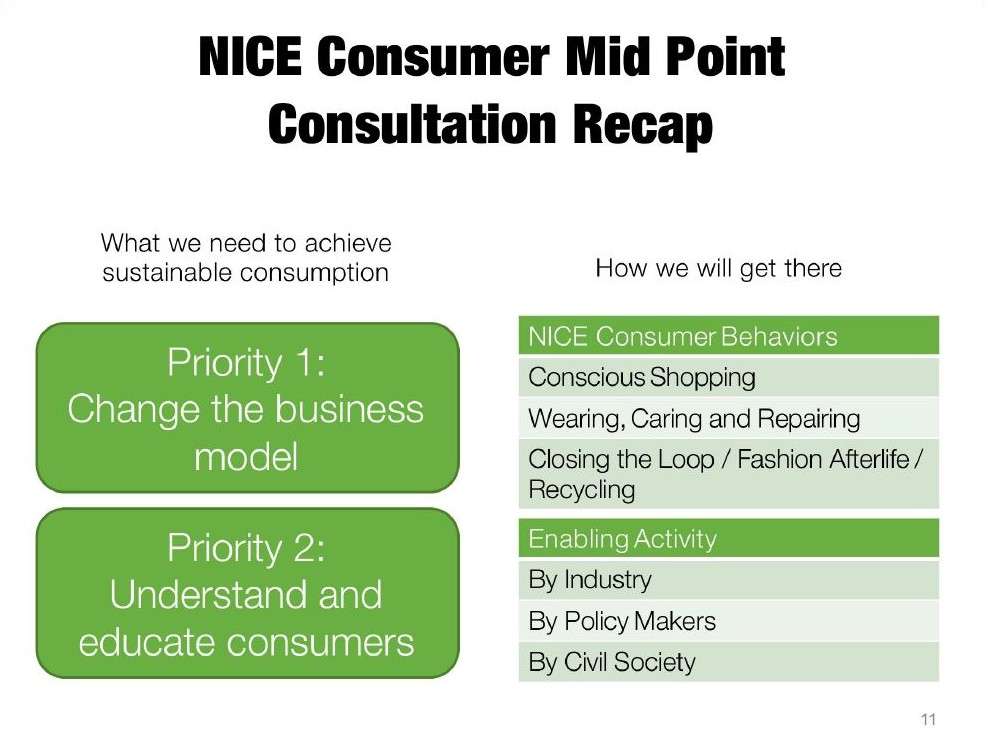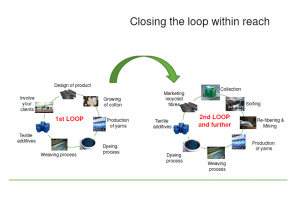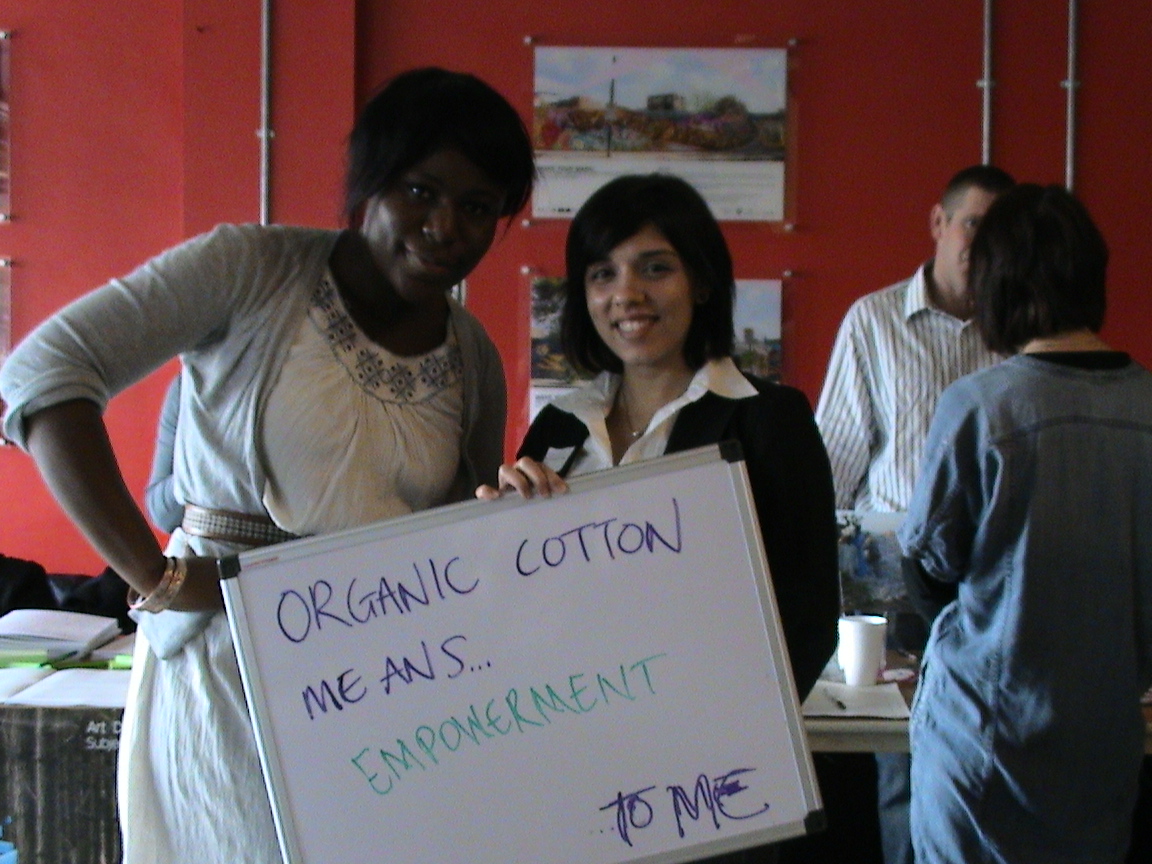The initial stage of the NICE consumer project comes to an end this week and the NICE Framework for Achieving Sustainable Fashion Consumption through Collaboration will receive its final revisions during the Copenhagen Fashion Summit. The framework is designed to inspire action from government, industry and civil society, it also highlights areas where more discussion is needed; for example, how can we create a transparent value chain, or an environment which fosters sustainable business models and supports sustainable behaviors?
Since my last update I have attended a workshop in London, and taken part in the final webinar, Stress Testing the NICE Consumer Framework on Sustainable Consumption of Fashion. At this event there were presentations from Puma, Levi Strauss & Co., Futerra, and Vanessa Friedman from the Financial Times. The session also included a summary of the progress midway through the consultation process. Cody Sisco [BSR] spoke about the major priorities raised by participants and other important areas including supply chain transparency, and the need for increased education, understanding and collaboration. For design students out there, he also mentioned the important role designers can play in moving things forward! A full recording of the webinar is available to download at BSR.

The Copenhagen Fashion Summit
The Copenhagen Fashion Summit starts today and promises to be an exciting event, which will bring together around 900 stakeholders to discuss sustainability and CSR in the fashion industry. Organisers have been keen to include young people in these discussions and a number of student representatives from around Europe will gather today for a Youth Summit, and present the results of their discussions at the main event tomorrow. The Summit will also launch an industry specific code of conduct, a joint initiative by the UN Global Compact and NICE.
“As an industry facing serious and widely publicized social and environmental challenges, the fashion and textile industry is uniquely positioned to launch a sectoral initiative under the umbrella of the UN Global Compact.”
George Kell, Executive Director of the UN Global Compact
If you can’t get to Copenhagen but want to keep up with the event then I know that @katetfletcher and the @NICEconsumer have already been tweeting live from the summit!
Further reading//
BSR: NICE Consumer Project Summary
BSR: NICE Consumer Research Summary





![[Fashion High]](http://socialalterations.com/wp-content/uploads/2010/04/Talking-Back-059.jpg)
![[Fashion High]](http://socialalterations.com/wp-content/uploads/2010/04/Talking-Back-066.jpg)






























